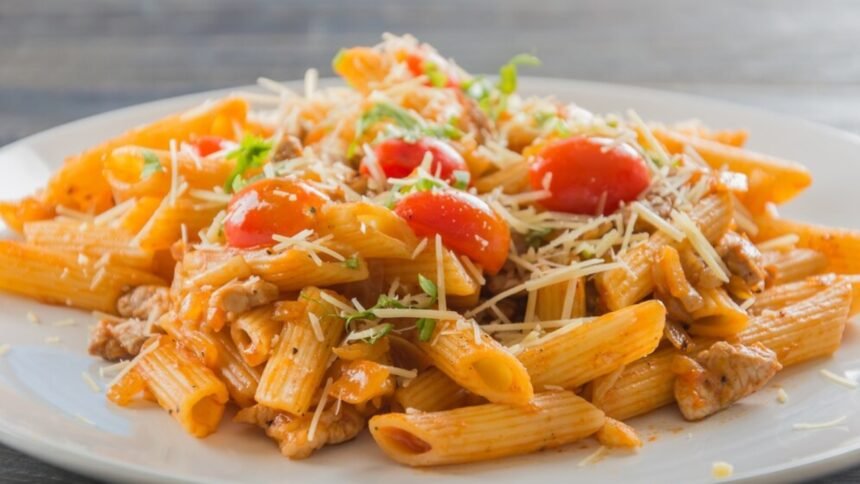Introduction
Cuşcuş, also known as couscous, is a staple food in many cultures, especially in North African cuisine. This versatile and nutritious dish has a rich history and comes in various forms, making it a favorite in many households worldwide. In this article, we’ll explore the origins of cuşcuş, its different types, how to cook it, and its nutritional benefits. Whether you’re a seasoned cook or a beginner in the kitchen, this guide will provide you with everything you need to know about cuşcuş.
What is Cuşcuş?
Cuşcuş, pronounced as “koos-koos,” is a type of pasta made from durum wheat semolina. It is a staple food in many North African countries, including Morocco, Algeria, Tunisia, and Libya. Cuşcuş is known for its light and fluffy texture, which absorbs flavors well, making it an excellent base for various dishes.
The History of Cuşcuş
Cuşcuş has a long and storied history dating back to the 7th century. It originated with the Berbers of North Africa, who used it as a primary source of sustenance. Over time, it spread across the Mediterranean, becoming a beloved dish in many cultures. Its significance is not only culinary but also cultural, often served during important events and celebrations.
Varieties of Cuşcuş
Cuşcuş comes in several varieties, each with its unique characteristics. The most common types include:
- Moroccan Cuşcuş: Small and fine, typically steamed.
- Israeli Cuşcuş (Ptitim): Larger, pearl-like, often toasted.
- Lebanese Cuşcuş (Moghrabieh): Even larger, almost pea-sized, chewy texture.
- Whole Wheat Cuşcuş: A healthier alternative made from whole grain semolina.
How to Cook Cuşcuş
Cooking cuşcuş can be simple or traditional, depending on the method used. Here, we’ll explore both traditional and modern techniques.
Traditional Methods
Traditional methods of cooking cuşcuş involve steaming, which preserves its texture and flavor. This process includes soaking the semolina in water, then steaming it over boiling water or broth multiple times until it becomes light and fluffy.
Modern Techniques
For those short on time, modern techniques offer quick and easy ways to prepare cuşcuş. Instant cuşcuş can be prepared by simply adding boiling water or broth, covering it, and letting it sit for a few minutes before fluffing it with a fork.
Nutritional Benefits of Cuşcuş
Cuşcuş is not only delicious but also nutritious. It is rich in carbohydrates, providing a good source of energy. Additionally, it contains essential nutrients like fiber, protein, vitamins, and minerals, making it a healthy addition to any diet.
Cuşcuş in Different Cuisines
Cuşcuş has made its way into various cuisines around the world. Let’s explore its role in North African, Middle Eastern, and Mediterranean cooking.
North African Cuisine
In North Africa, cuşcuş is often served with stews, meats, and vegetables. Popular dishes include Moroccan cuşcuş with lamb and vegetables and Tunisian cuşcuş with fish.
Middle Eastern Cuisine
Middle Eastern cuisine features cuşcuş in several dishes, such as Maftoul in Palestine and Jordan, and as a side dish in many Lebanese meals.
Mediterranean Cuisine
The Mediterranean region embraces cuşcuş in salads and as a side dish. It pairs well with grilled vegetables, seafood, and herbs like parsley and mint.
Delicious Cuşcuş Recipes
Whether you’re a vegetarian or a meat lover, there are countless ways to enjoy cuşcuş. Here are some recipe ideas:
Vegetarian Cuşcuş
Create a vibrant vegetarian cuşcuş salad with roasted vegetables, chickpeas, and a zesty lemon dressing. Or try a comforting cuşcuş with sautéed mushrooms and spinach.
Meat-Based Cuşcuş
For a hearty meal, prepare cuşcuş with lamb and vegetables, seasoned with traditional spices like cumin and coriander. Another delicious option is chicken cuşcuş with a tomato-based sauce.
Tips for Perfect Cuşcuş
Achieving the perfect cuşcuş involves a few key tips:
Flavor Enhancements
Enhance the flavor of your cuşcuş by cooking it in broth instead of water and adding spices like saffron, turmeric, or cinnamon.
Common Mistakes
Avoid common mistakes such as overcooking or under-fluffing the cuşcuş. Always let it rest covered after adding hot water to ensure it absorbs moisture properly.
Cultural Significance of Cuşcuş
Cuşcuş holds significant cultural importance in many countries. It is often served during celebrations, family gatherings, and religious festivals, symbolizing unity and abundance.
Cuşcuş for Special Diets
For those with dietary restrictions, cuşcuş can still be enjoyed. Gluten-free options made from alternative grains like corn or rice are available, and it can be easily adapted to vegan diets by using plant-based broths and ingredients.
Frequently Asked Questions
What is the difference between Moroccan and Israeli cuşcuş? Moroccan cuşcuş is smaller and finer, traditionally steamed, while Israeli cuşcuş, also known as pearl cuşcuş, is larger, with a chewier texture, often toasted before cooking.
Can cuşcuş be made gluten-free? Yes, there are gluten-free cuşcuş options available, typically made from corn, rice, or quinoa, suitable for those with gluten sensitivities or celiac disease.
How should cuşcuş be stored? Uncooked cuşcuş should be stored in an airtight container in a cool, dry place. Cooked cuşcuş can be refrigerated in a sealed container for up to five days.
Is cuşcuş suitable for vegans? Cuşcuş itself is vegan, but it’s essential to check the cooking ingredients. Use vegetable broth and plant-based additions to ensure the dish remains vegan-friendly.
What are some common dishes that use cuşcuş? Common dishes include Moroccan cuşcuş with lamb, vegetable cuşcuş salad, and Mediterranean cuşcuş with grilled vegetables and herbs.
How can I add more flavor to my cuşcuş? Cook cuşcuş in broth instead of water, and add spices, herbs, and aromatics like garlic, onion, and lemon zest to enhance its flavor.
Conclusion
Cuşcuş is a versatile and nutritious dish that has earned its place in global cuisine. From its rich history and cultural significance to its various types and delicious recipes, there’s much to appreciate about cuşcuş. Whether you’re cooking it for the first time or looking to expand your culinary repertoire, this guide offers valuable insights and tips to make your cuşcuş dishes truly exceptional.
